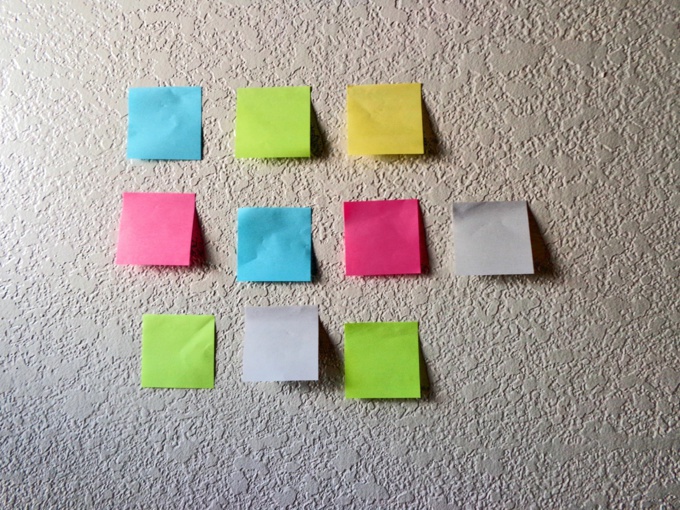Ready-to-use, brilliantly realized product seems perfect. We only see the magnificent embodiment and we only look forward to a positive experience of use. What we do not see is how much work is invested in this masterpiece. And how many people and processes are involved in its production. This is a general rule for the best products. Behind every product there is an excellent team that followed the roadmap from idea to implementation - and showed excellent results.
There are many different people and elements are involved in any quality product: the leader and/or product manager, product team (designers, engineers, testers, etc.), components, roadmap, methods, marketers, advertisers, and, of course, customers. Just like in cooking, replacing any ingredient (team member) can lead to a completely different result. Sometimes this is for the better, but more often the final product turns out not what you were planning and what users would like.
If you sell chocolate cakes, but suddenly switch to strawberries, some customers will be disappointed.
It is also true that if you follow the recipe and process too carefully, you will never discover new flavor combinations. Therefore, although the best cooks have strict discipline in the kitchen, they still have time for experiments and improvement. The main thing is to use a reliable framework and be flexible within it.
If product creation is cyclical, then the scheme is usually called a product roadmap. It will not replace a streamlined process or a good team, but it will focus people and the process on the best result for the client.
How does a roadmap contribute to product implementation?
Focus
First, we review scope of work and focus on core values. Is not just desirable, but necessary, if you want to achieve the result. Roadmaps also help to see things not worth our attention. Going on with culinary analogies, one can say: “We bake the best pies. Not cookies, not cakes, but pies.”
Consistency
Roadmaps ensure consistency. The whole team is moving towards a single goal. As soon as the roadmap is discussed, every member of the team understands their role and results of their efforts. We would say in the kitchen: “Now everyone knows everything about the filling and decoration of the cake, as well as how long the whole process takes - from kneading to baking.”
Priorities
Knowing what to do is only half the battle; the other half is knowing when. Priorities are the key component of an effective roadmap. That is, the statement “We have no time for this” should be specified: “This is not included in the list of priority actions on the road to success.”
Visibility
The ability to see how a team works and what it does greatly simplifies the process. Roadmaps highlight potential pitfalls and opportunities if the work is organized in accordance with priorities and significance. If it is 3:00 pm, and the cake should be ready by 10:00 the next morning, then you can outline the stages of work in this period of time.
Vision
The best companies always know where they are going. Ideal vision describes a heavenly picture for clients. All this is not for you, but for them. Disney's most famous and perhaps the best customer-centric concept was “make people happy”. This clearly indicates what you should do every day. You have just pleased the client by delivering him a delicious and beautiful cake. What next? Your roadmap should describe how to move to a long-term relationship with the client.
Now you know what makes a good roadmap and how to use it to achieve the best results.
Based on "Product Leadership. How Top Product Managers Launch Awesome Products and Build Successful Teams" by Richard Banfield, Martin Eriksson и Nate Walkingshaw
There are many different people and elements are involved in any quality product: the leader and/or product manager, product team (designers, engineers, testers, etc.), components, roadmap, methods, marketers, advertisers, and, of course, customers. Just like in cooking, replacing any ingredient (team member) can lead to a completely different result. Sometimes this is for the better, but more often the final product turns out not what you were planning and what users would like.
If you sell chocolate cakes, but suddenly switch to strawberries, some customers will be disappointed.
It is also true that if you follow the recipe and process too carefully, you will never discover new flavor combinations. Therefore, although the best cooks have strict discipline in the kitchen, they still have time for experiments and improvement. The main thing is to use a reliable framework and be flexible within it.
If product creation is cyclical, then the scheme is usually called a product roadmap. It will not replace a streamlined process or a good team, but it will focus people and the process on the best result for the client.
How does a roadmap contribute to product implementation?
Focus
First, we review scope of work and focus on core values. Is not just desirable, but necessary, if you want to achieve the result. Roadmaps also help to see things not worth our attention. Going on with culinary analogies, one can say: “We bake the best pies. Not cookies, not cakes, but pies.”
Consistency
Roadmaps ensure consistency. The whole team is moving towards a single goal. As soon as the roadmap is discussed, every member of the team understands their role and results of their efforts. We would say in the kitchen: “Now everyone knows everything about the filling and decoration of the cake, as well as how long the whole process takes - from kneading to baking.”
Priorities
Knowing what to do is only half the battle; the other half is knowing when. Priorities are the key component of an effective roadmap. That is, the statement “We have no time for this” should be specified: “This is not included in the list of priority actions on the road to success.”
Visibility
The ability to see how a team works and what it does greatly simplifies the process. Roadmaps highlight potential pitfalls and opportunities if the work is organized in accordance with priorities and significance. If it is 3:00 pm, and the cake should be ready by 10:00 the next morning, then you can outline the stages of work in this period of time.
Vision
The best companies always know where they are going. Ideal vision describes a heavenly picture for clients. All this is not for you, but for them. Disney's most famous and perhaps the best customer-centric concept was “make people happy”. This clearly indicates what you should do every day. You have just pleased the client by delivering him a delicious and beautiful cake. What next? Your roadmap should describe how to move to a long-term relationship with the client.
Now you know what makes a good roadmap and how to use it to achieve the best results.
Based on "Product Leadership. How Top Product Managers Launch Awesome Products and Build Successful Teams" by Richard Banfield, Martin Eriksson и Nate Walkingshaw



















